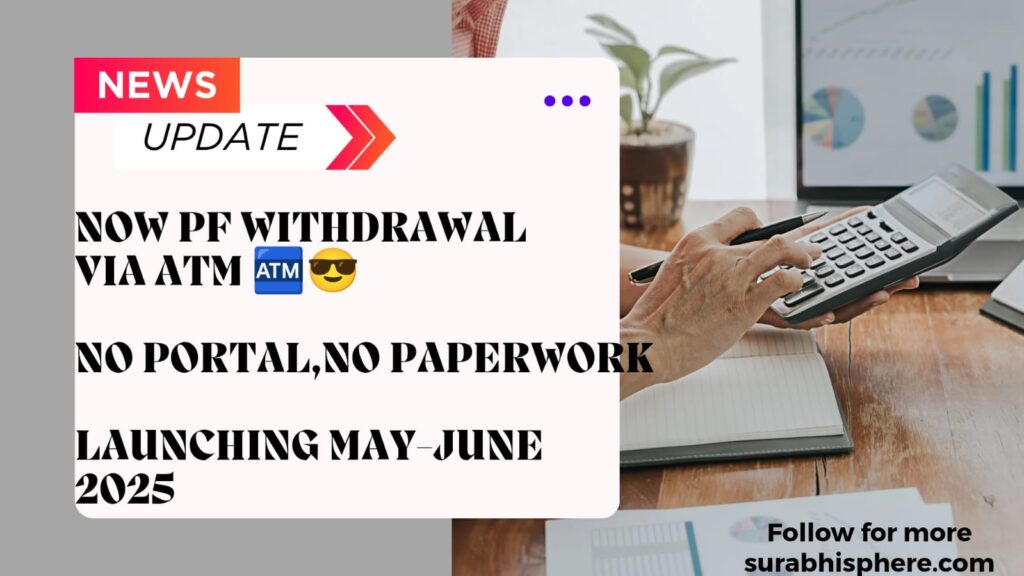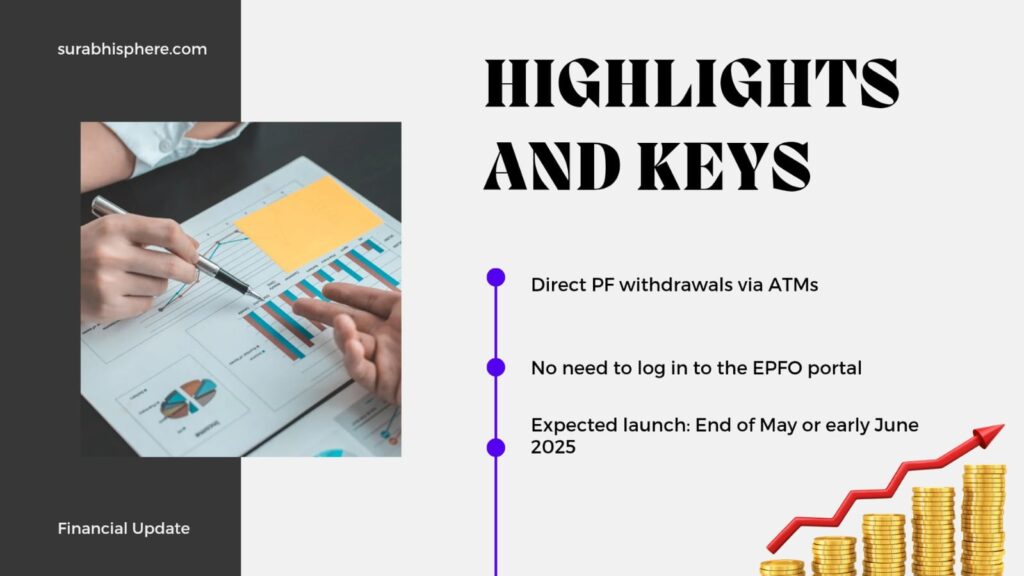
Big news for salaried employees! The Employees’ Provident Fund Organisation (EPFO) is set to launch a game-changing feature allowing members to withdraw their PF funds directly from ATMs using UPI or Aadhaar authentication — a major step toward faster, paperless access to your retirement savings.
🔄 What’s Changing?
Until now, withdrawing your PF meant:
- Logging into the EPFO UAN portal
- Filling out forms
- Waiting for approval and disbursal
But under the upcoming EPFO 3.0 initiative, this entire process is being reimagined.
🚀 Key Highlights of the New PF Withdrawal System
- 💸 Direct PF withdrawals via ATMs
- 🔐 Authentication through Aadhaar or UPI
- 📟 No need to log in to the EPFO portal
- ⚡ Instant access to your PF funds
- 🗓️ Expected launch: End of May or early June 2025
In an interview with Press Trust of India, Union Labour and Employment Minister Mansukh Mandaviya confirmed that the new version, EPFO 3.0, will be rolled out in May or June 2025. The initiative is supported by the Ministry of Labour and Employment and has received the go-ahead from the National Payment Corporation of India (NPCI).
Sources: ClearTax, Bajaj Finserv, DD News, CNBC TV18

💡 Why This Matters
This feature is a potential lifesaver in emergencies. No more waiting days for approval — just walk to an ATM, authenticate yourself, and withdraw your money within minutes.

📌 Current PF Withdrawal Process (Still Active)
Until the new system is live, here’s how to withdraw your PF:
- Login to the EPFO Member Portal
- Go to Online Services > Claim
- Select and submit the relevant form
- Wait for credit to your bank account
✅ What You Should Do Now
- Make sure your Aadhaar is linked to your EPFO account
- Link your UPI ID if required (details to be announced)
- Keep an eye on EPFO updates for the official launch
📝 Final Thoughts
The new ATM-based withdrawal system is a leap toward digitized, user-friendly finance. It’s not live yet — but when it is, EPFO members can enjoy faster, more flexible access to their hard-earned savings.
📌 Bookmark this blog for future updates and step-by-step guides once the feature rolls out.
